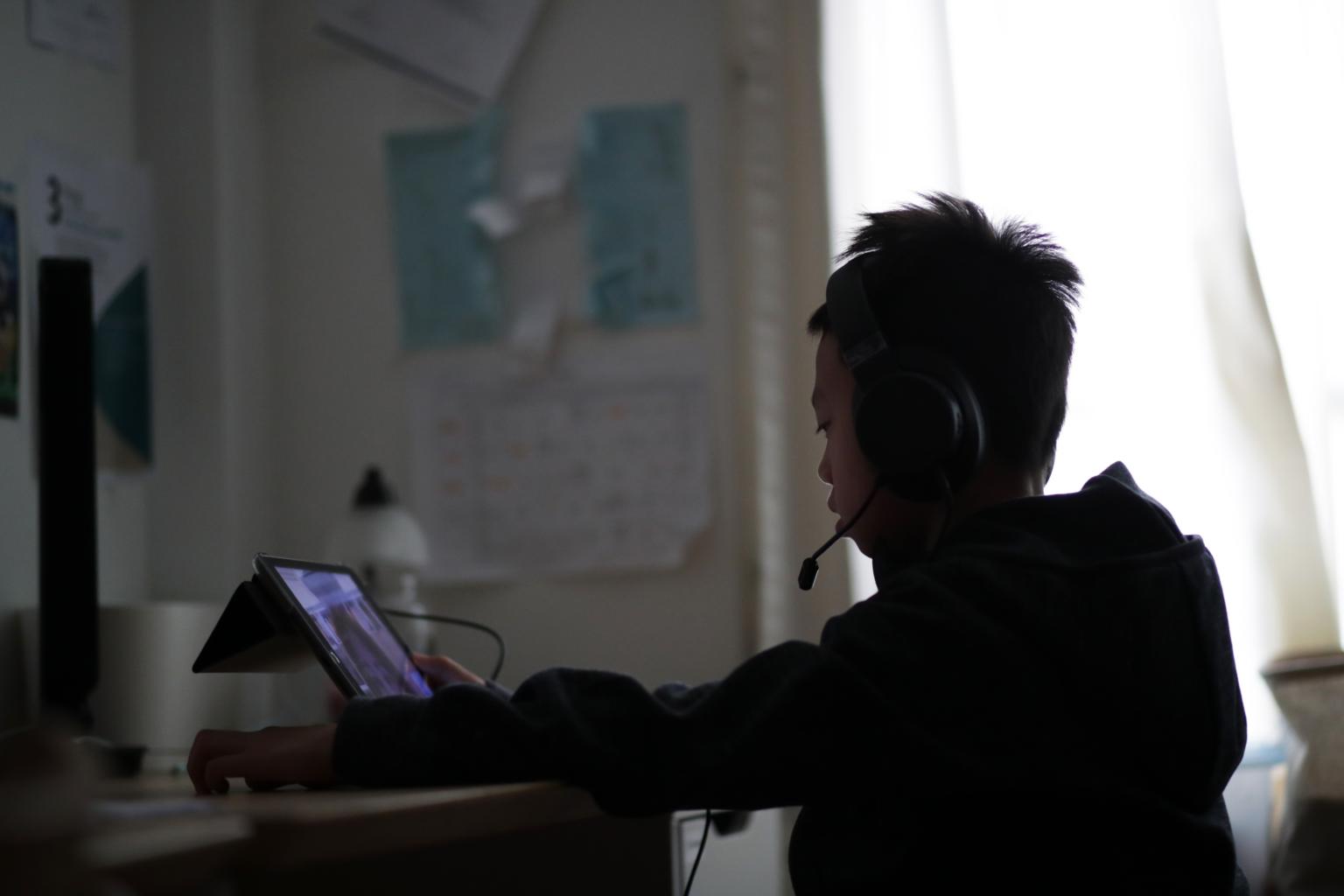COVID-19 SPECIAL
Home-based learning: What have we learnt from the great HBL experiment?
Sign up now: Get ST's newsletters delivered to your inbox

Home-based learning was rolled out nationwide after schools shut in April.
PHOTO: ST FILE
Follow topic:
SINGAPORE - As students of all levels returned to school this past week, it was announced that home-based learning (HBL) is here to stay.
Education Minister Ong Ye Kung said recently that online learning is set to become routine, suggesting that HBL could be held once a fortnight, for starters.
Amid the coronavirus pandemic, HBL was rolled out nationwide after schools shut in April.
After the circuit breaker to stem the spread of Covid-19 ended on June 1, most students in primary and secondary schools alternated between being physically in school and HBL, on a weekly basis, for a month.
Now that the weekly rotation is over, it is timely to assess what lessons were learnt from the big HBL experiment and its chief benefits that can also be reaped in the physical classroom.
Educators interviewed by The Straits Times say virtual and classroom learning are two distinct beasts, but there are useful synergies between the two, which, when combined, could lead to students having a more enriching learning experience.
Here are the five lessons to draw on.
1. CROSSOVER LESSONS
Many of the innovative approaches teachers employed during HBL last month can already be translated into a classroom, says Dr Teo Chew Lee from the Office of Education Research at National Institute of Education, Nanyang Technological University Singapore.
She recounts a physics experiment where the teacher asked Secondary 1 students to build a catapult using ice-cream sticks, bottle caps and rubber bands at home. Photos and videos were taken and uploaded.
This led to wide-ranging discussions on energy conversion, renewable energy and real-world problems like power shortages faced by some African schools.
Dr Teo says the same lesson can be replicated in the classroom, but perhaps made more open-ended and more seamless, by incorporating messaging features similar to group WhatsApp chats, which can include discussions before or after the lesson. This is so that even after the lesson ends, the learning continues.
2. RECORDED LESSONS ON TAP
Having recorded lessons during online learning means this resource can be used by students for review and revision at any time, says Mr Rum Tan, director of SmileTutor, a home tuition agency.
He says: "I believe one of the weaknesses of traditional classroom learning is that students are all by themselves once they get home. They have no one to assist them in their learning, so they turn to tutors.
"The key idea here is to provide students with instant access to the learning materials and guidance in the form of pre-recorded lessons."
So if a student wants to learn about statistics, for example, he can access the relevant tutorial online and take as long as he needs to ingest it.
3. HOMEWORK BY VIDEO
The uploading of video and audio recordings, which were commonly used during HBL, could be a different way of submitting homework, says Dr Nicholas Duggan, principal of Invictus Family, the virtual extension of Invictus International School.
Inspired by the lockdown worldwide, the virtual campus, which will be launched next month, will offer full-time home-based learning.
Dr Duggan says: "Not every child can communicate his or her work well or speak well, such as some students with dyslexia."
Using videos or audio footage to talk about their work may help some children become more confident speakers, he says.
4. PARENTS HELPING TEACHERS
During the circuit breaker, parents monitored their children doing HBL.
Such close observation meant that "parents were forced to look at how their kids learn and they can better communicate that to their children's teachers", says Mrs Pamela Lim, founder of All Gifted High School, a private school.
For example, parents may have noticed that their child is a kinaesthetic learner, who learns more quickly with hands-on experiments and manipulatives, compared with others who prefer the more auditory form of learning that dominates in classroom settings, she says.
Teachers are generally keen to work closely with parents and such feedback can help the teacher offer the child more targeted assistance.
5. GAMIFICATION WORKS
Video-conferencing tools, commonly used during the stay-in period because of Covid-19, can be a boon for shy kids.
Mrs JoBeth Williams, head of English at Cherrr, an online learning platform that offers live-streamed tuition lessons, says: "With HBL, I get kids who are more excited to raise their hands. They want to speak and like to see their faces blown up onscreen.
"It's a lot more freeing for them as it doesn't feel like 40 other people are watching them."
The former teacher says her mini quizzes online, where she gives out "virtual trophies", are a hit.
A similar interactive points reward system can be used in primary-school classrooms, she suggests.
Mr David Squires, who teaches English at British Council Singapore, has found that gamification - which has elements of game-playing, like scoring points and competing with others - is very motivating for his students.
Quiz-based game platforms like Kahoot! also have the benefit of giving him "instant feedback" on which questions his students found particularly difficult.
Such games can be played on interactive whiteboards, which he uses in his classroom.
Looking back on the HBL experiment, he found it rewarding how quickly many teachers and students mastered the technology required for virtual lessons.
Another thing that struck him was "how much the connection between the teacher and students means".
"I always looked forward to seeing my own students online and my daughters, who are in Primary 4 and 6, had teachers who made a video for the children."
"The compassion and empathy is the same, whether it is online or face to face."

